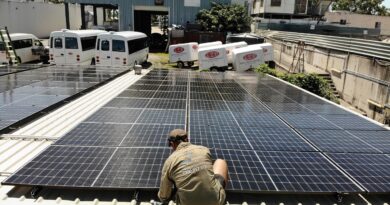Best Rural Internet Plans for Reliable Connectivity in 2025
Access to reliable internet has become essential in our digitally driven world. However, many rural communities often face challenges when it comes to finding dependable and affordable internet services. With limited infrastructure and high deployment costs, rural areas are frequently underserved by major internet providers. Thankfully, many companies now offer specialized rural internet plans to bridge the digital divide.
In this article, we will explore what makes a good rural internet plan, the types of internet connections available, and the best options currently on the market.
Why Rural Internet Plans Matter
High-speed internet access is no longer a luxury but a necessity for work, education, healthcare, and entertainment. Unfortunately, rural areas often lag behind urban regions in connectivity. This disparity limits opportunities for residents in remote locations.
Rural internet plans are designed specifically to overcome challenges such as sparse populations, geographical barriers, and limited infrastructure. These plans help rural communities access the same digital tools and opportunities as their urban counterparts.
Key Features to Look for in Rural Internet Plans
When selecting a rural internet plan, consider the following features:
- Coverage Area: Ensure the provider has a strong presence in your region.
- Speed: Look for plans offering sufficient speeds for your needs, whether it’s streaming, remote work, or online learning.
- Data Limits: Unlimited data plans are ideal, but even capped plans should offer generous allowances.
- Cost: Choose a plan that fits your budget while offering the best value for money.
- Technology: The type of internet connection—satellite, fixed wireless, DSL, or fiber—affects speed, reliability, and cost.
Types of Rural Internet Connections
There are several types of connections used to provide rural internet services:
- Satellite Internet:
Satellite internet is one of the most common options for rural areas. Providers like Starlink, HughesNet, and Viasat use satellites to deliver internet signals directly to users. While coverage is nearly universal, latency and data caps can be limitations. - Fixed Wireless Internet:
Fixed wireless uses radio signals to deliver internet from a tower to a receiver at your home. This option is faster and more reliable than satellite but requires a clear line of sight to the tower. - DSL (Digital Subscriber Line):
DSL relies on telephone lines to deliver the internet. It’s widely available but can be slower in remote areas where infrastructure is outdated. - Fiber-Optic Internet:
Fiber-optic connections offer lightning-fast speeds but are rarely available in rural areas due to high installation costs. - Cellular Internet:
Cellular data plans can be a practical solution for rural areas where 4G LTE or 5G networks are available. However, coverage can vary widely depending on the provider.
Best Rural Internet Plans for 2024
Here are some of the top rural internet plans available in 2024:
1. Starlink
- Type: Satellite
- Speed: Up to 250 Mbps
- Cost: $110/month + $599 for equipment
- Why Choose Starlink?
Starlink, developed by SpaceX, has revolutionized rural connectivity with its low-earth orbit (LEO) satellites. It offers higher speeds and lower latency compared to traditional satellite providers.
2. HughesNet
- Type: Satellite
- Speed: Up to 25 Mbps
- Cost: Plans start at $64.99/month
- Why Choose HughesNet?
HughesNet is ideal for areas where other options are unavailable. While speeds are slower, the coverage is extensive, and pricing is competitive.
3. Viasat
- Type: Satellite
- Speed: Up to 100 Mbps
- Cost: Plans start at $49.99/month
- Why Choose Viasat?
Viasat offers faster speeds than HughesNet, making it a better choice for streaming and large file downloads in rural areas.
4. Rise Broadband
- Type: Fixed Wireless
- Speed: Up to 50 Mbps
- Cost: Plans start at $45/month
- Why Choose Rise Broadband?
Rise Broadband is one of the largest fixed wireless providers in the U.S. It offers unlimited data plans, making it a solid choice for heavy internet users.
5. T-Mobile Home Internet
- Type: Cellular (5G/4G LTE)
- Speed: 33–182 Mbps
- Cost: $50/month
- Why Choose T-Mobile?
T-Mobile Home Internet is a competitive option in areas with strong cellular coverage. It’s affordable, with no data caps or annual contracts.
6. AT&T Fixed Wireless
- Type: Fixed Wireless
- Speed: Up to 25 Mbps
- Cost: $59.99/month
- Why Choose AT&T?
AT&T’s fixed wireless option offers reliable speeds and affordable pricing, making it a great choice for homes in moderately remote areas.
Tips for Choosing the Right Plan
- Test Coverage in Your Area: Use coverage maps or contact providers to confirm availability.
- Compare Plans Side-by-Side: Pay attention to speed, data caps, and pricing.
- Read Customer Reviews: Understand what other users in your area think about a provider’s service.
- Negotiate with Providers: Some companies may offer discounts or promotions.
Future of Rural Internet Plans
The future of rural internet looks promising with advancements in technology. Low-earth orbit satellite systems like Starlink are already transforming the landscape. Additionally, government initiatives such as the FCC’s Rural Digital Opportunity Fund (RDOF) aim to expand broadband access to underserved areas.
As infrastructure improves and competition increases, rural internet plans will become faster, more reliable, and more affordable.
Conclusion
Rural internet plans are critical in ensuring that remote communities can access the opportunities provided by the digital world. Whether through satellite, fixed wireless, or cellular options, there’s a solution for nearly every rural household. By carefully evaluating your needs and comparing available options, you can find the best rural internet plan to keep you connected in 2024 and beyond.




